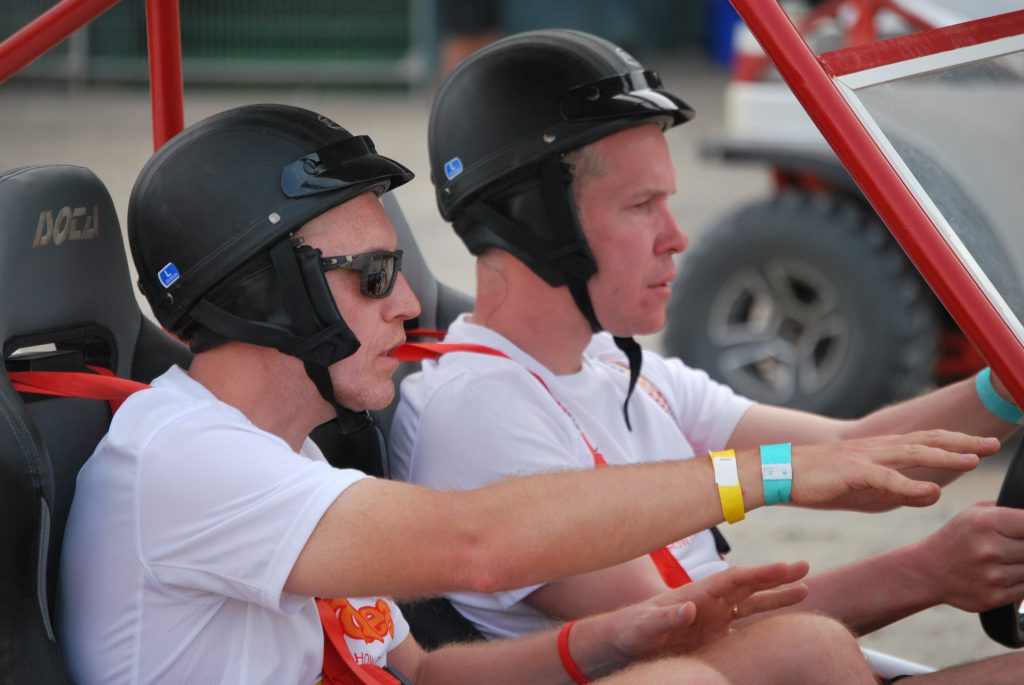The future of corporate leadership. The six stages of the leadership journey
Steering an organization on its unique journey towards its chosen destination is one of the biggest personal challenges facing all leaders. Why? Because internal and external issues will constantly change the landscape in which the organization operates.
Navigating the landscape is widely recognized as the new core requirement of future leaders. The benefits of applying navigational skills are immense, including the creation of a more agile, successful and sustainable organization.
Last October we went on an inspirational mission to New York with a group of Belgian CEO’s. We were invited by AB InBev to visit their NY office. We were impressed by the way this model of future leadership is well integrated and executed on day-to-day basis.
Understanding the six stages of the leadership journey is essential to getting to grips with the ‘navigational’ aspect to the leader’s role:
- Research
- Strategy
- Engagement
- Motivation
- Development
- Ownership
- Research
The ‘research’ stage focuses on the size of the opportunity for everyone likely to be involved on the journey including suppliers, partners and other stakeholders. The role of the Leader is to create a journey experience and an organization that others wish to be part of.
Three important objectives should be achieved during this stage:
- Identify the reasons for embarking on the journey
- Establish the challenges and issues likely to be faced in the future
- Produce a vision statement highlighting the dreams and ambitions of the organization
The outcomes from each objective should be used to describe the landscape. The destination (the vision) will inspire individuals to sign up to the journey.
Remember, everyone wants to be part of something special. Purpose, belonging, challenge, adventure and opportunity should form part of the vision. If not, early momentum on the journey will be problematic. Attracting, recruiting and retaining talent will be difficult to achieve without this dimension.
- Strategy
The ‘strategy’ stage focuses on the production of the roadmap needed to carefully chart the right course on the journey. The role of the leader is to demonstrate how the vision will be realized by aligning the leaders’ overall plan to each role in the organization.
Three important objectives should be achieved during this stage:
- Identify the areas of operational focus critical to success on the journey
- Establish the behaviors and/or values important to the organization
- Match the relevant areas of focus to each individual’s role.
The outcomes from each objective should be used to produce a simple roadmap (=a blueprint for the journey). The effectiveness of the blueprint can be measured by answering four key questions: ‘Where are we going?’; ‘How will we get there?’; ‘What is my expected contribution?’ and ‘What’s in it for me?’.
The production of the route map is the single most important piece of work carried out by leaders on the journey
- Engagement
The ‘engagement’ stage focuses on obtaining the buy-in and commitment from others to the roadmap. The role of the leader is to not to generate more followers, but to create more leaders throughout the organization.
Three important objectives should be achieved during this stage:
- Identify cultural architects (leaders without authority)
- Carry out informal people surveys to gauge commitment levels
- Use the feedback to improve the overall workplace experience
The outcomes from each objective should be used to improve communication, build trust, develop leadership capability and sustain performance momentum on the journey. Cultural architects are advocates of the vision, the route map and are proud to be associated with the organisation and the journey.
The greater number of cultural architects you have in the organisation, the higher your level of people engagement will be. Productivity and performance will improve.
- Motivation
The ‘motivation’ stage focuses on the creation and reinforcement of the performance climate needed on the journey. Motivation describes ‘personal drive’ and is often misunderstood in the workplace. Leaders and managers will never be able to motivate their people. Individuals motivate themselves.
The role of the leader is to create a climate which will enable others to perform to their full potential.
Three important objectives should be achieved during this stage:
- Define what is meant by high performance
- Identify what motivates and de-motivates individuals
- Remove any barriers to high performance that may exist
The outcomes from each objective should be used to improve the people management skills of leaders and managers. Four key ‘climate’ principles should be built into their day to day interaction with colleagues – achievement, recognition, participation and growth.
Understanding motivation and the link with the climate is vital to sustaining momentum on the journey.
- Development
 The ‘development’ stage focuses on the need to protect the systems, processes and people important to creating a successful and sustainable organization. The role of the leader is to improve operational efficiency on the journey by setting new and higher standards.
The ‘development’ stage focuses on the need to protect the systems, processes and people important to creating a successful and sustainable organization. The role of the leader is to improve operational efficiency on the journey by setting new and higher standards.
Performance complacency can easily creep in on any journey. The development stage is designed to stop this happening.
Three important objectives should be achieved during this stage:
- Identify the barriers to operational efficiency
- Agree behavioral competencies for each job role
- Educate individuals in the principle of lifelong learning
The outcomes from each objective should be used to inspire people in the organization to innovate, change and actively seek new and smarter ways of working.
Understanding the unique contribution of others, unlocking the power of information and the creative use of experience and expertise is important to delivering success.
- Ownership
The ‘ownership’ stage focuses on maximizing people’s potential in the organization and is the culmination of the work carried out during the previous five stages. Ownership is often regarded as the ‘Holy Grail’ on the journey – the ultimate cultural prize where agility, pride, trust and collective focus is demonstrated.
The role of the leader is to build a confident, high-performing workforce resulting in the successful execution of the strategy.
Three important objectives should be achieved during this stage:
- Explain the importance of ‘personal accountability’
- Ensure people understand their role and performance responsibility
- Use coaching and feedback to inspire others
The outcomes from each objective should be used to create an environment where people are confident enough to take the appropriate action to perform at the highest level. The ability to handle last-minute problems, surprising challenges and unforeseen circumstances are measures of effective leadership
The former CEO of the Belgian telecom operator Telenet, Duco Sickinge, used to asks his managers the same question every time:“What did you decide today?”. That’s the perfect mindset for this model.
Arrival at the destination is achieved by integrating an internal coaches system.
Best wishes on your journey, wherever it may take you.
